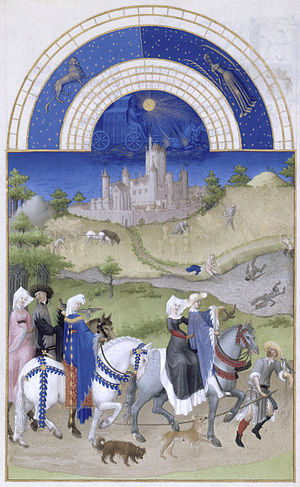You can help expand this article with text translated from the corresponding article in German. Click [show] for important translation instructions.
|
This article needs additional citations for verification. (June 2019) |

The term Labours of the Months refers to cycles in Medieval and early Renaissance art depicting in twelve scenes the rural activities that commonly took place in the months of the year. They are often linked to the signs of the Zodiac, and are seen as humankind's response to God's ordering of the Universe.
The Labours of the Months are frequently found as part of large sculptural schemes on churches, and in illuminated manuscripts, especially in the calendars of late medieval Books of Hours. The manuscripts are important for the development of landscape painting, containing most of the first painting where this was given prominence. The most famous cycle is that painted in the early 15th century by the Limbourg brothers in Très Riches Heures du Duc de Berry. In the early 16th century, long after the genre was established, the miniaturist Simon Bening produced cycles which link the Limbourgs with the landscape paintings of Pieter Bruegel the Elder.